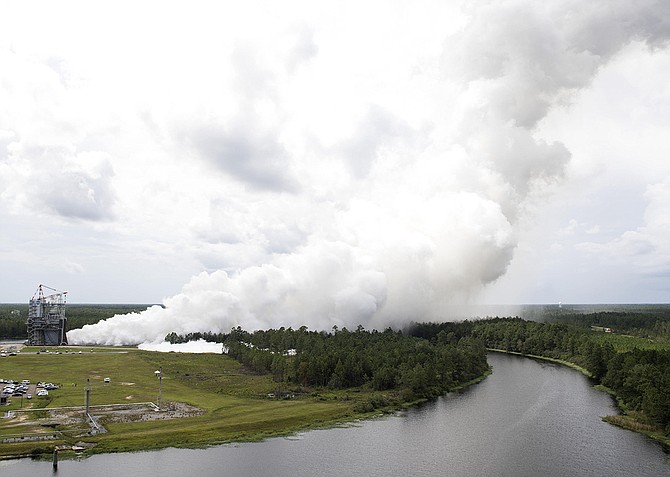Engineers and operators at the Stennis Space Center in Hancock County have completed the fourth test for the engine that NASA plans to use to get an unmanned mission—and later astronauts—to Mars. Photo courtesy NASA
JACKSON — Mississippi is integral in getting NASA spacecrafts—and eventually astronauts—to Mars. NASA engineers and scientists at the Stennis Space Center in Hancock County on the Gulf Coast completed their fourth test of the RS-25 engine, which they plan to use on the Space Launch System deep-space rocket.
On Aug. 9, NASA engineers and operators conducted a 500-second test of the RS-25 engine, marking the same length of time needed to actually launch the Space Launch System rocket. The SLS rocket will have four RS-25 engines, when it officially launches on its first exploration mission to Mars, a press release from NASA says.
"The test marked another milestone toward launch of the first integrated flight of the SLS rocket and Orion crew vehicle," NASA says. "Exploration Mission-1 will be an uncrewed mission into lunar orbit, designed to provide a final check-out test of rocket and Orion capabilities before astronauts are returned to deep space."
Exploration Mission-1 will be the first test of the Mars-bound Space Launch System and the Orion spacecraft, which will travel thousands of miles on a three-week mission, the NASA website says.
NASA has developed the multiple components necessary for Exploration Mission-1 for years. The Orion spacecraft will be in space longer than any ship designed for astronauts has been without docking at a space station, NASA's website says, but it will return home faster than previous missions.
"This is a mission that truly will do what hasn't been done and learn what isn't known," Mike Sarafin, EM-1 mission manager at NASA Headquarters in Washington, said in late 2015. "It will blaze a trail that people will follow on the next Orion flight, pushing the edges of the envelope to prepare for that mission."
Work on the flight controllers for Exploration Mission-1 began at the Stennis Space Center in March. NASA is testing all controllers and engines for the mission at the Hancock County space center.
Email state reporter Arielle Dreher at arielle@jacksonfreepress.com.



Comments
Use the comment form below to begin a discussion about this content.